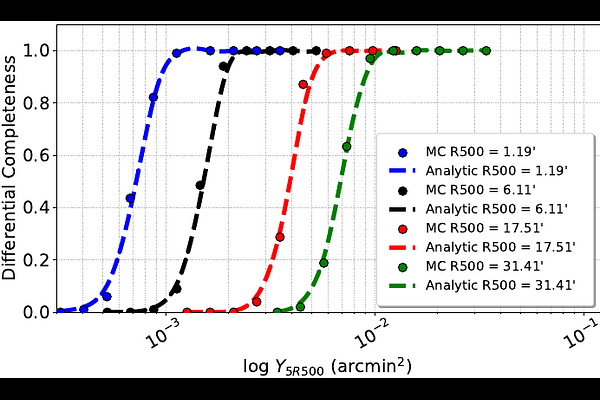CHEX-MATE: The Impact of Triaxiality and Orientation on Planck SZ Cluster Selection and Weak Lensing Mass Measurements

CHEX-MATE: The Impact of Triaxiality and Orientation on Planck SZ Cluster Selection and Weak Lensing Mass Measurements
H. Saxena, J. Sayers, A. Gavidia, J. B. Melin, E. T. Lau, J. Kim, L. Chappuis, D. Eckert, S. Ettori, M. Gaspari, F. Gastaldello, S. Kay, L. Lovisari, F. Oppizzi, M. D. Petris, G. W. Pratt, E. Pointecouteau, E. Rasia, M. Rossetti, M. Sereno
AbstractGalaxy cluster abundance measurements are a valuable tool for constraining cosmological parameters like the mass density ($\Omega_m$) and density fluctuation amplitude ($\sigma_8$). Wide area surveys detect clusters based on observables, such as the total integrated Sunyaev-Zel'dovich effect signal ($Y_{SZ}$) in the case of Planck. Quantifying the survey selection function is necessary for a cosmological analysis, with completeness representing the probability of detecting a cluster as a function of its intrinsic properties. Employing a Monte-Carlo method, we inject triaxial cluster profiles into random positions within the Planck all-sky maps, and subsequently determine the completeness of the Planck-selected CHEXMATE sample as a function of both geometry and SZ brightness. This is then used to generate 1000 mock CHEX-MATE cluster catalogs, and the distribution of shapes and orientations of the detected clusters, along with any associated bias in weak lensing-derived mass ($M_{WL}$) due to this orientation-dependent selection, denoted as $1 - b_{\chi}$, is obtained. We show that cluster orientation impacts completeness, with a higher probability of detecting clusters elongated along the line of sight (LOS). This leads to $1 - b_{\chi}$ values of $0-4\%$ for CHEXMATE clusters relative to a random population. The largest increase in $M_{WL}$ is observed in the lowest mass objects, which are most impacted by orientation-related selection bias. This bias is relevant for upcoming SZ surveys like CMB-S4, and should be considered for surveys utilizing other probes for cluster detection, such as Euclid.